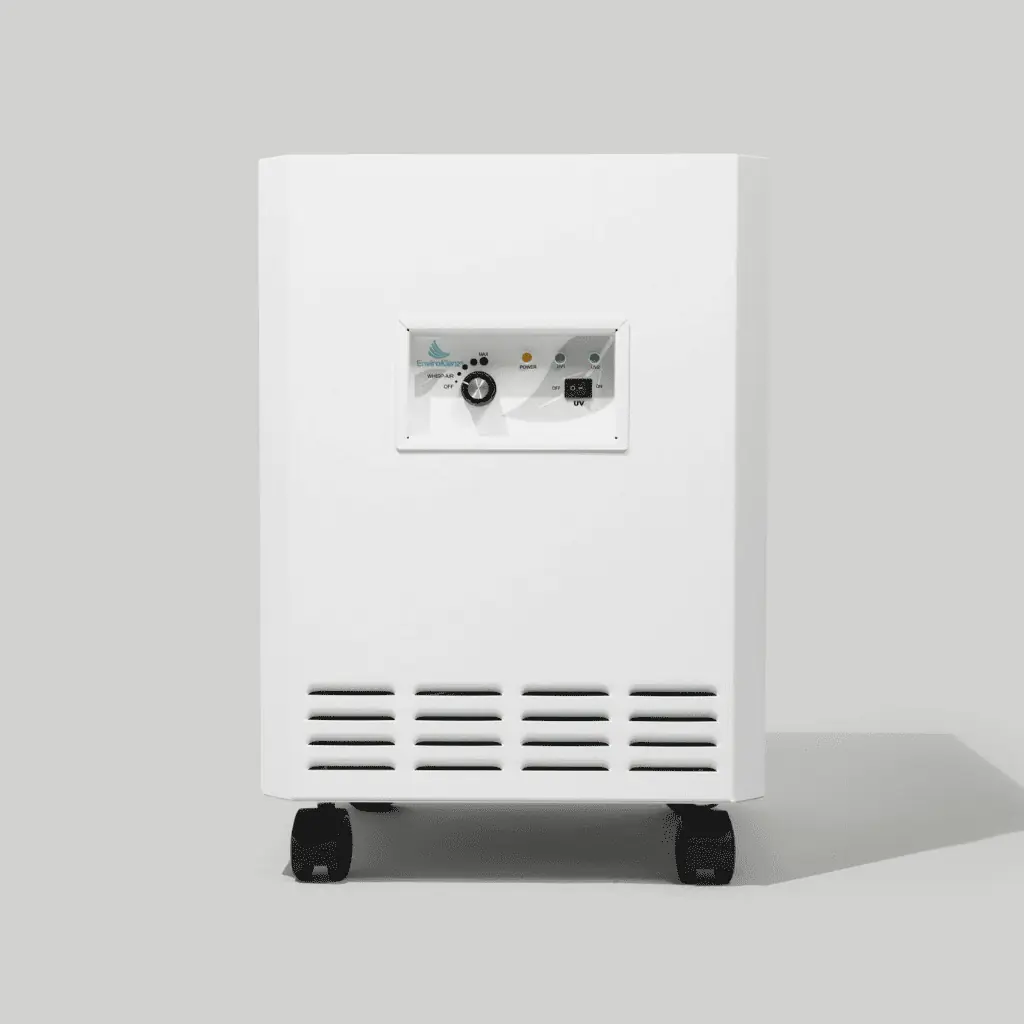Although the topic has cropped up from time to time in the past, most of us have not put too much thought into the quality of the air we breathe at work. We notice if someone is cooking something for lunch or if someone is wearing a new perfume, but we don’t usually consider what is in the air that we can’t smell. Recently, with the global pandemic and the news surrounding COVID-19, air quality has become a huge issue for business owners and staff members alike. When you work in an office building, you spend eight or nine hours breathing the same air as everyone around you. Could that affect your health once you clock out for the day?
In this article, you will learn the most common causes of poor indoor air quality in most offices, get recommendations on how to improve indoor air quality, and what impact indoor air quality will have on your health immediately and over time.

What Causes Poor Indoor Air Quality?
There are many causes of poor indoor air quality. Here are a few of the most common ones:
- Polybrominated biphenyl (PBB) & Polychlorinated biphenyl (PCB)
- These are both chemicals added to plastic as a flame retardant.
- Polyurethane
- This is a lacquer used to help waterproof surfaces.
- Formaldehyde
- Formaldehyde is added to many adhesives and is a common pollutant found in indoor air.
- Pesticides
- This is a common pollutant in office buildings as chemicals are regularly sprayed to control pests.
- Mold & Mildew
- The older and damper the building is, the more likely it is to be contaminated with mold.
- Household Cleaning Supplies
- Cleaning supplies are a necessary evil. They are essential for keeping surfaces clean but can create microdroplets that contaminate the air.
Although there are hundreds of other potential (and far deadlier) contaminants, the most common offenders are common, everyday irritants that become trapped inside a building.
There are a few reasons that office buildings are more likely to have issues with indoor air contamination than other types of buildings.
- Office buildings are designed to be “sealed” for energy efficiency, limiting the amount of fresh, circulating air.
- The air in cities (around office building) is often polluted, so there is a high chance the air being circulated is also polluted.
- Larger ventilation systems in office buildings provide more places for bacteria or mold to grow.
How do businesses measure indoor air quality?
In order to determine the exact contaminant quantity in the air, professionals have several devices at their disposal. These devices take measurements of CO2, formaldehyde, fine dust, temperature, and relative humidity, to name a few. Some are also able to quantify and measure the size of air particles. These tools are used to get an accurate reading of just how dangerous air is for a human to breathe, and they use the data to devise a plan to correct the issues.

Can Bad Air Quality Make You Sick?
Absolutely. The Environmental Protection Agency estimates 33 to 50% of all office buildings are effected by contaminated air and that workers lose over 10 million workdays per year as a result. Not only that, but workers also report a loss of productivity as a result.
Office buildings where the building itself contributes to illnesses and employee reports of comfort-related issues are often referred to as “Sick Buildings.” Sick Building Syndrome is a series of seemingly unrelated illnesses experienced by employees only when they are at the building, usually a workplace or school. The symptoms experienced tend to disappear completely outside of the building.
The impact a sick building has on a business ranges from impacting a business’ bottom line all of the way to impacting the employees’ long term health, making the quality of your office building’s air a very important consideration.
How Can I Improve the Quality of the Air in My Office?
The best way to reduce indoor air pollution for your office building is by installing an air purifier from Environklenz.
The EnviroKlenz® Mobile Air System is the answer to “Sick Building System,” as a result of their patented two stages of filtration. The EnviroKlenz® Air Cartridge filters out and safely breaks down air contaminants without allowing anything back out into the circulating air. In contrast, the HEPA filter safely collects dust, allergens, and fine particulates as small as 0.3 microns at a 99.99% efficiency.
EnviroKlenz® Medical Disclaimer:
“Any information that is provided on this website is not for the use by any commercial or personal entity without expressed written consent of the blog author. The material and statements illustrated within this blog are not intended to diagnose, treat, cure, or prevent any diseases or medical conditions. Nor does the author in any way guarantee or validate the validity, totality, or efficacy of any claims and will therefore not be held responsible for the content of any claims. Always consult your medical physician for any specific medical advice or recommendations.”









